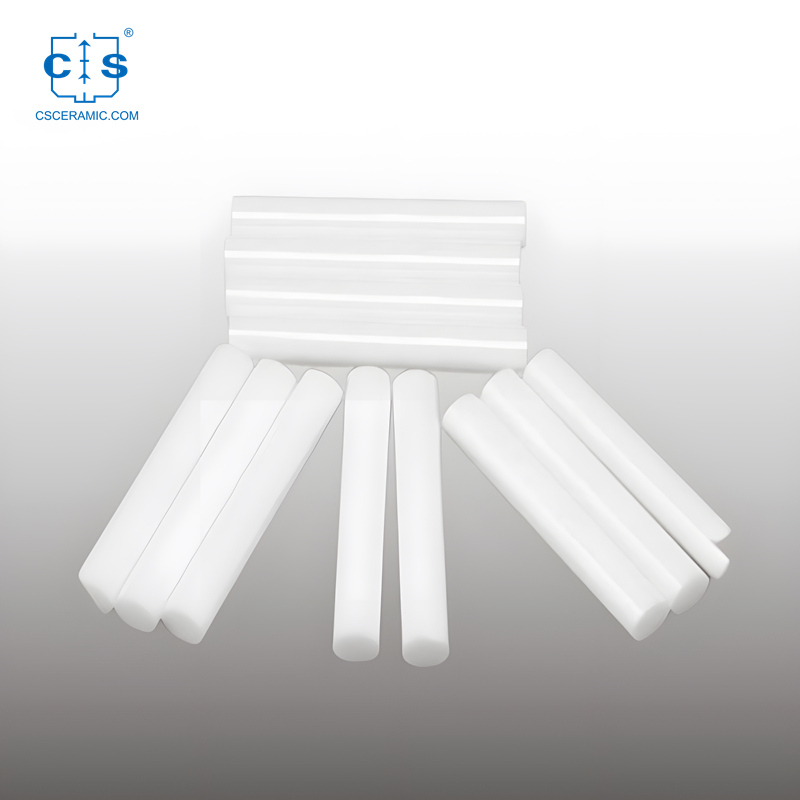In the evolving landscape of industrial ceramics, zirconia ceramic rods have emerged as a highly sought-after material, owing to their unparalleled properties and diverse applications. This comprehensive guide aims to provide you with an in-depth understanding of zirconia ceramic rods, their unique characteristics, and how to select and utilize them effectively for your projects.
Properties and Characteristics of Zirconia Ceramic Rods
Zirconia ceramic rods, also known as zirconia oxide or zirconium dioxide (ZrO₂) rods, exhibit remarkable durability, chemical stability, and thermal resistance. Their high purity and ultra-fine inorganic compound powder composition, coupled with precision manufacturing techniques, result in superior mechanical strength and toughness. These rods are also resistant to corrosion and abrasion, making them suitable for harsh environments.
Applications of Zirconia Ceramic Rods
Zirconia ceramic rods find applications in a wide range of industries, including semiconductor manufacturing, medical implants, and high-temperature environments. In the semiconductor industry, they are used as thermal isolation components due to their excellent thermal conductivity and low thermal expansion coefficient. In medical implants, zirconia ceramic rods are preferred for their biocompatibility and high strength. Furthermore, their resistance to high temperatures and chemical attacks renders them ideal for use in furnaces, kilns, and other extreme environments.

How to Select the Right Zirconia Ceramic Rods for Your Project
Choosing the appropriate zirconia ceramic rods for your project requires a careful consideration of factors such as size, shape, purity, and performance requirements. Understanding your specific application and the environmental conditions it will be exposed to is crucial in making an informed decision. Additionally, consulting with experts in the field can provide valuable insights and recommendations tailored to your needs.
Key Considerations for Designing with Zirconia Ceramic Rods
When designing with zirconia ceramic rods, it is essential to take into account their unique material properties. Their high strength and brittleness necessitate the use of appropriate fixtures and support structures to prevent fracture or damage. Furthermore, considering the thermal expansion coefficient and thermal conductivity of zirconia ceramic rods is crucial for ensuring their reliable performance in high-temperature applications.
Manufacturing Process of Zirconia Ceramic Rods
The manufacturing process of zirconia ceramic rods involves precision powder handling, mixing, forming, sintering, and finishing. The use of high-purity raw materials and advanced manufacturing techniques ensures the consistency and quality of the final product. Strict quality control measures are implemented throughout the manufacturing process to ensure that zirconia ceramic rods meet the required specifications and performance standards.

Testing and Quality Control of Zirconia Ceramic Rods
Rigorous testing and quality control are essential in ensuring the reliability and performance of zirconia ceramic rods. Common tests include mechanical properties testing, thermal shock resistance testing, chemical stability testing, and microstructural analysis. These tests help identify potential defects or weaknesses in the material and ensure that zirconia ceramic rods meet the desired standards for your application.
Conclusion
Zirconia ceramic rods offer a unique combination of properties that make them invaluable in a wide range of industrial applications. Their superior durability, chemical stability, and thermal resistance enable them to perform reliably in harsh environments. By understanding the properties and characteristics of zirconia ceramic rods and considering key factors such as size, shape, purity, and performance requirements, you can select and utilize them effectively for your projects. With the right knowledge and insights, zirconia ceramic rods can unlock new possibilities and enhance the performance of your applications.




 info@csceramic.com
info@csceramic.com







 +86 18273288522
+86 18273288522